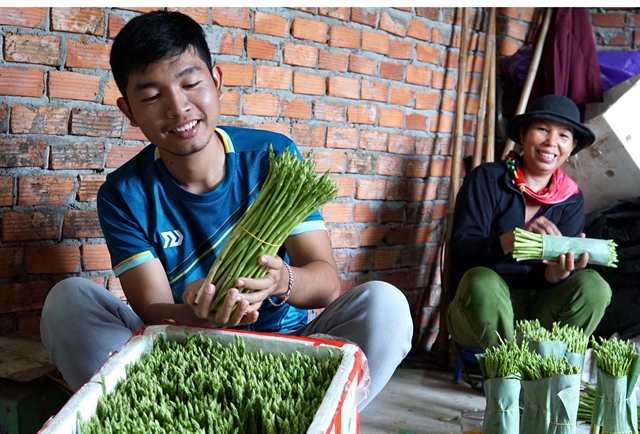

|
| A customer browses ceramics at a shop in Bát Tràng market, Gia Lâm District, Hà Nội. — VNA/VNS Photo Trần Việt |
HÀ NỘI — The capital city wants to expand handicraft exports to an annual growth of 8 per cent in export turnover under a programme on promoting Hà Nội’s industrial development for over the next five years.
The programme also aims to create more than 3,500 craft and fine art products for both the domestic and foreign markets.
Soon Hà Nội will invite foreign importers and international friends to its annual handicraft fair to seek partners.
Through the programme, the city also aims to support more than 10,000 businesses and industrial establishments in rural areas and help up to 70,000 rural labourers find stable jobs.
To fulfil the target, Hà Nội will hold 300 vocational training courses for rural workers and develop high quality human resources and raise management capacity in the sector.
It will also assist firms and industrial establishments in rural areas to buy new equipment and apply advanced technology in a bid to increase productivity and quality products as well as reducing costs.
Hà Nội is leading the country in handicraft production. In 2018, the export turnover of this sector reached US$192 million. The sector generated jobs for nearly a million workers with an average annual income of about VNĐ55 million ($2,365) each.
The capital has 1,350 craft villages, accounting for 60 per cent of the total nationwide.
These villages are diversified and cover different trade groups including processing forest and agricultural products, lacquer, bamboo, embroidery, mechanics, sculptures, and garments.
Many products associated with rural culture are almost intact and have developed into a profession, such as the carpentry village of Chảng Sơn in Thạch Thất District.
Bát Tràng Commune, which has thousands of households engaged in pottery production which has now earned worldwide recognition, is another typical example. — VNS









.jpg)










